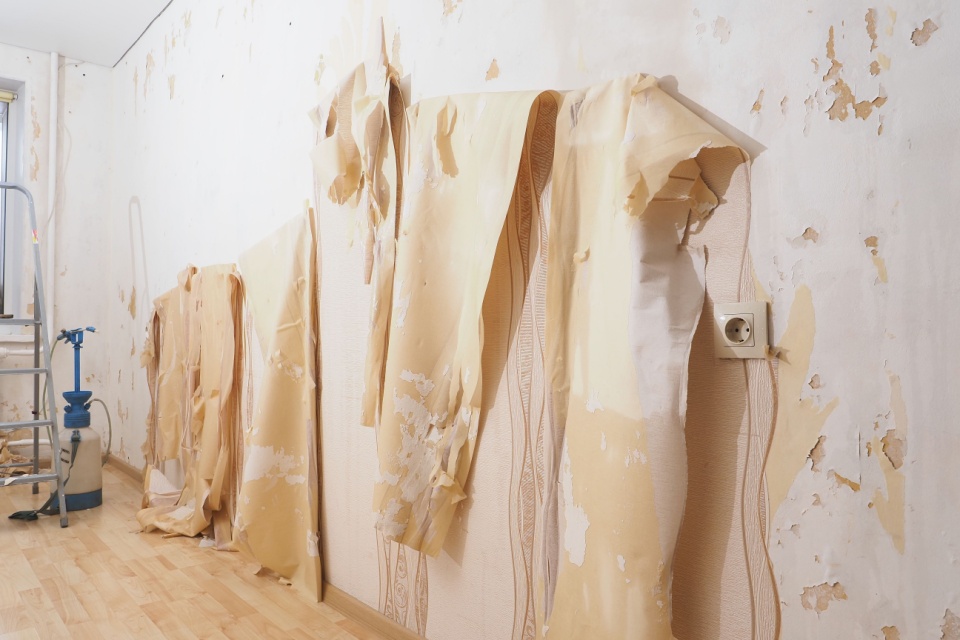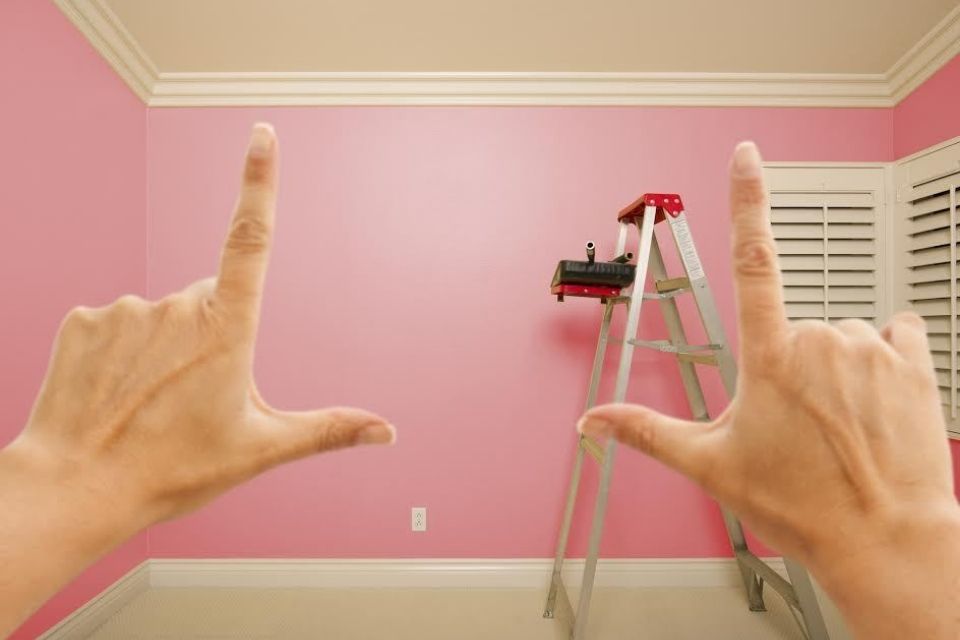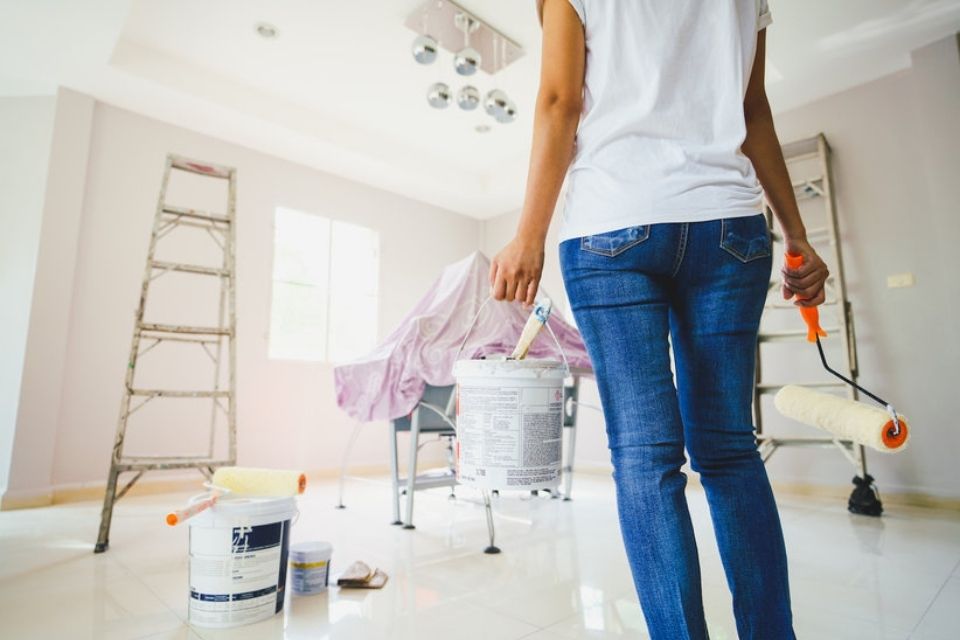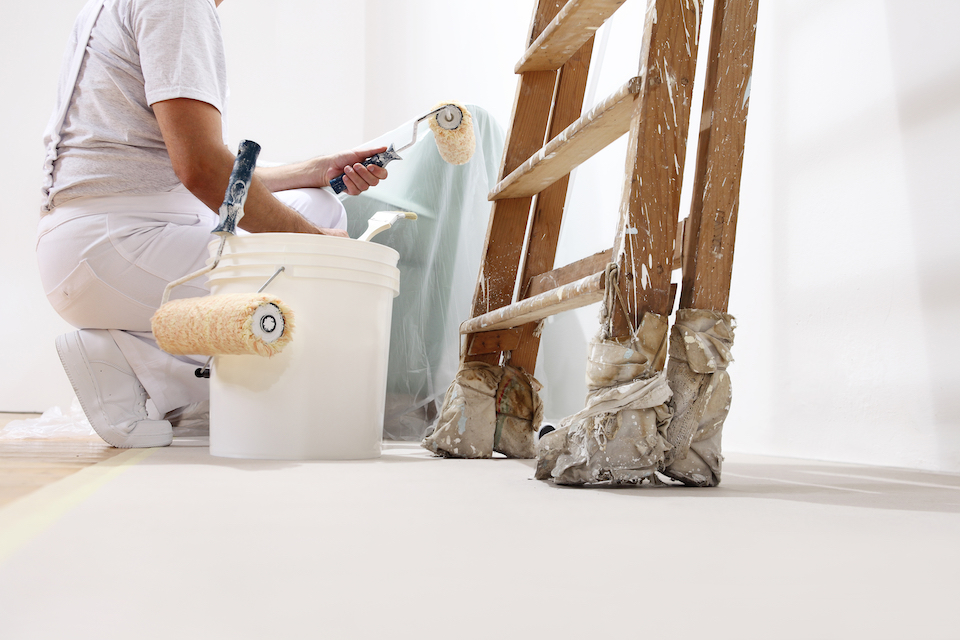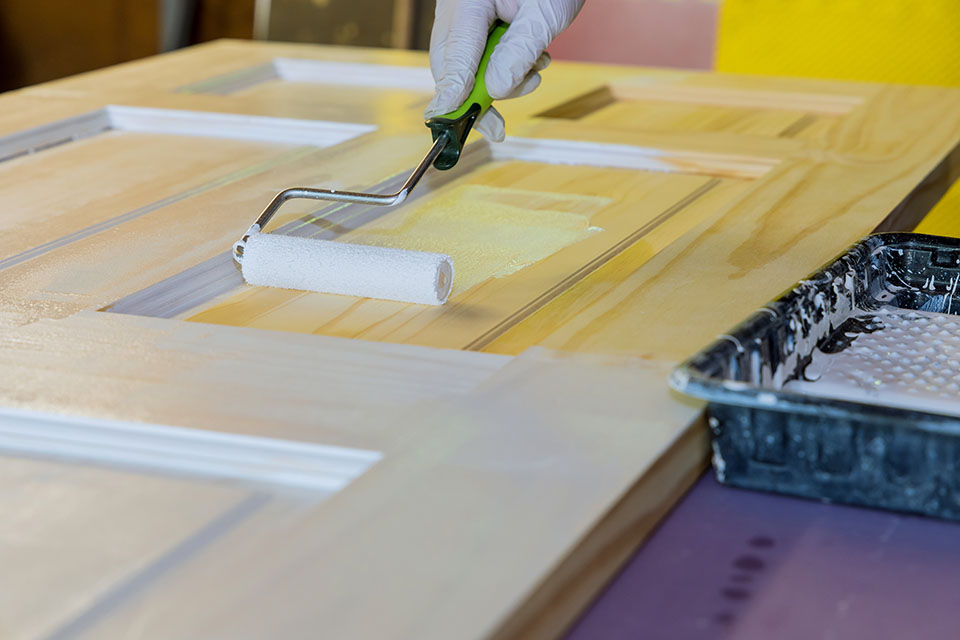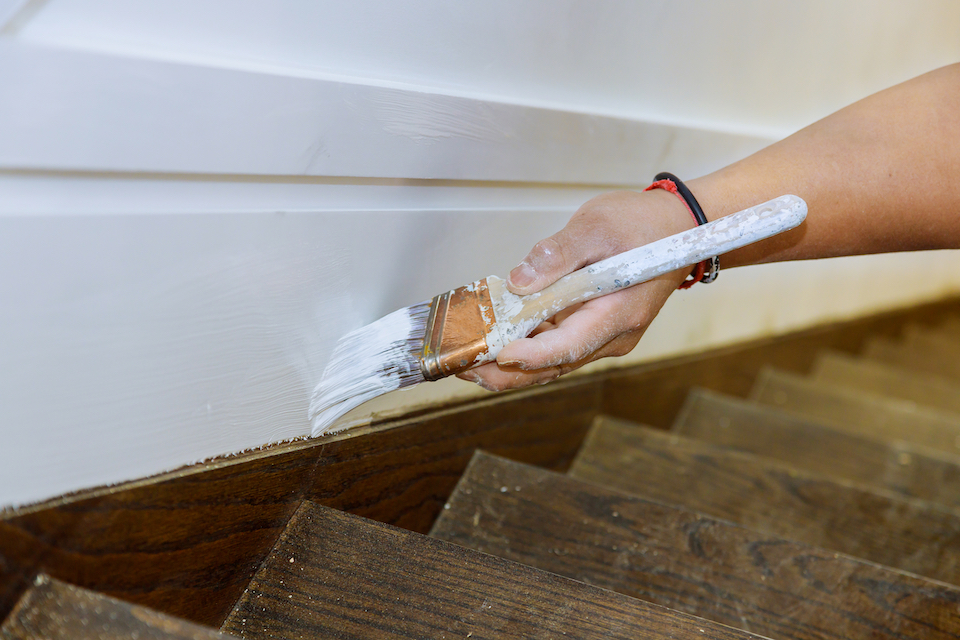Wallpaper Removal
The following article will look at the various reasons why wallpaper might refuse to come off and what you can do about each of these problems. We will discuss reasons such as strong glue, wallpaper on plaster and wallpaper on drywall.
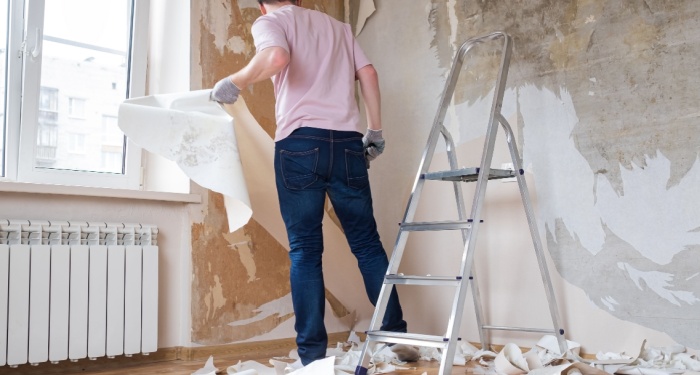
Our article will also explore topics such as the cost of having your wallpaper stripped. If your wallpaper is stuck and won’t seem to come off, this article will prove helpful in finding you a solution.
Wallpaper Types
There are three primary types of wallpaper, each of which we will discuss in this section. Dry-strippable or peelable wallpaper has a vinyl front and an adhesive paper-based backing. Unlike most wallpaper types, it does not need to have paste on its back.
Dry-strippable wallpaper is much easier to remove than other wallpapers due to its design. The vinyl layer at the top will come off easiest, and even if the adhesive layer is not entirely removed, it can be easily taken off by following the instructions given by the wallpaper’s manufacturer. Porous wallpaper is designed in such a way as to allow air and water to pass through it with relative ease.
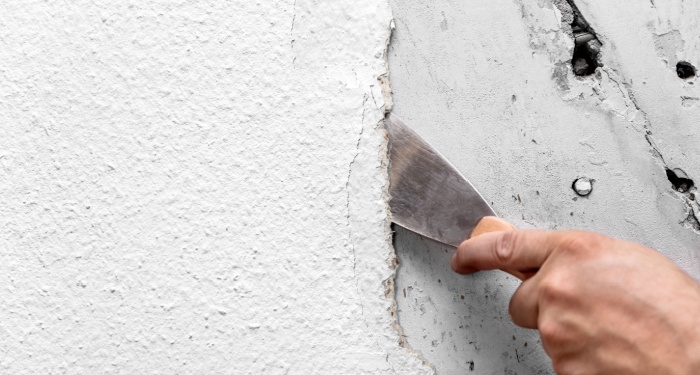
It can absorb water easily, allowing it to loosen and thus, it can be removed without too much difficulty in most cases. However, it will likely not be easy to remove as dry-strippable wallpaper.
Nonporous wallpaper, as the opposite of porous wallpaper, minimises the ability of air and water to pass through it. This type of wallpaper usually has a nonporous layer which is decorative. It is generally the most difficult type of wallpaper to remove.
Why Won’t My Wallpaper Come Off?
For this section, we will explore common problems that can affect removing wallpaper and discuss the signs you may notice if these issues are present. Problems that may arise are strong glue, the wallpaper type, wallpaper on plaster, wallpaper on drywall, wallpaper that’s been painted over and issues with the layers of wallpaper.
Strong Glue
Wallpaper glue can prove difficult to remove. A strong glue may remain on the wall or may hold the wallpaper or some of the wallpaper in place, refusing to budge. Signs that strong glue is an issue in fully removing wallpaper is that the wallpaper won’t come off at all or that parts of it are stuck and won’t move.
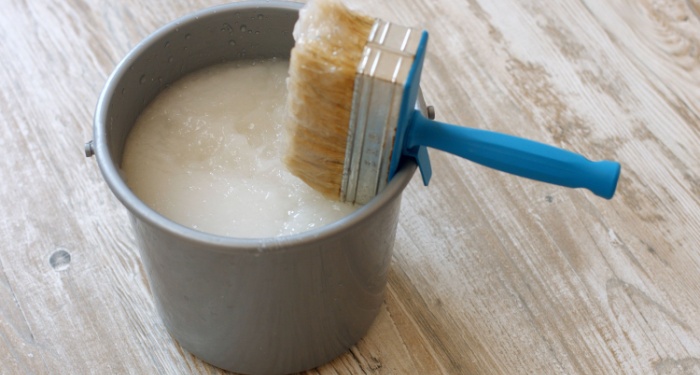
These parts may come in the form of chunks or/and hardened sections of wallpaper. You may also notice the presence of a sticky residue on the wall from parts that have been successfully removed but where the glue has remained stuck to the wall.
Type of Wallpaper
Another issue that can arise is the type of wallpaper in question. Nonporous wallpaper may prove especially difficult to remove. Porous wallpaper will be less difficult to remove than nonporous wallpaper but trickier than peelable wallpaper. You can tell that your wallpaper is nonporous if upon placing a sponge on the wallpaper to begin the removal process, the water simply drips off.
In this case, it will likely explain why it is proving so difficult to remove. Porous wallpaper, on the other hand, rapidly absorbs water and should come off with relative ease. If your wallpaper absorbs water but won’t come off properly, then there may be a specific issue with the product.
Peelable wallpaper can be removed easily and without the need for water to be used. If your wallpaper begins to come off without water being used but can’t be fully removed, then it is likely a peelable wallpaper with specific issues related to the product.
Wallpaper on Plaster
If your wallpaper is layered on top of plaster, it may prove more difficult to remove. Plaster is a material designed to decorate, coat and protect the walls and ceilings inside a house. If the wallpaper is on plaster, it will require a specific approach to removing it, which we will get to in the next section.
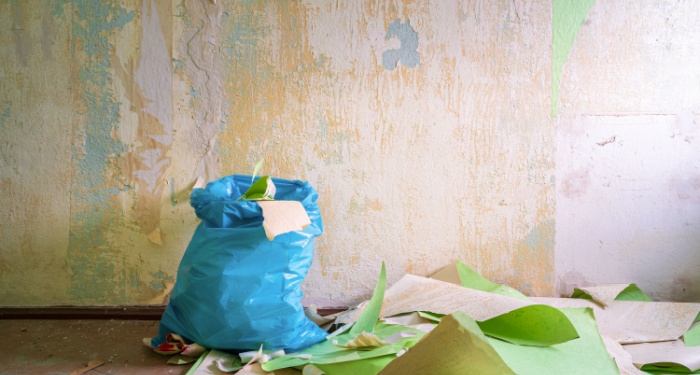
Evidence that there is plaster on the wall that is making it difficult to remove wallpaper is if you find a hardened layer beneath the wallpaper. If for example, you were to place a pin or thumbtack into a layer beneath the wallpaper and it splinters, then it is probably plaster. An older house is also more likely to have plaster on the wall.
Wallpaper on Drywall
You may experience issues in removing wallpaper that has been placed in front of drywall, as with plaster, drywall’s main ingredient in gypsum. Drywall is a modern alternative to plaster.
To remove wallpaper that is layered on drywall will require a specific approach. If you have a modern home (built at any time in the last 60 years), its walls are likely covered with drywall. Since drywall is softer than plaster, if you were to put a thumbtack or pin inside it, it will not crack.
Wallpaper That’s Been Painted Over
As with removing wallpaper from drywall and plaster, if your wallpaper has been painted over, a specific method will be needed to take it off the wall. If you have a layer of paint covering your wallpaper, it may make it difficult to remove the wallpaper ease.
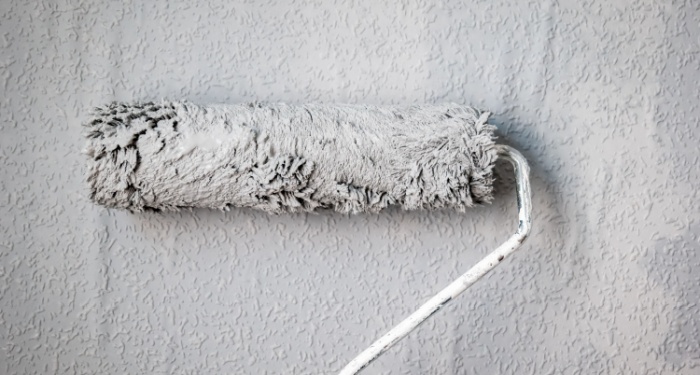
Layers of Wallpaper
Another possible reason why your wallpaper won’t come off is that there are several layers of wallpaper. If this is the case, you may need to figure out the nature of each layer in order to figure out the best approach to remove it. If you have multiple layers of wallpaper, it is probably because you have an old plaster wall.
You may notice that as you try to remove one layer, there appears to be at least one more layer of wallpaper beneath it. The wallpaper layers will likely be porous and decorated but also uncoated.
How to Get Wallpaper Off
We will now lay out solutions to each of the issues raised in the previous section. We will explain the easiest way to remove wallpaper depending on the issue at hand.
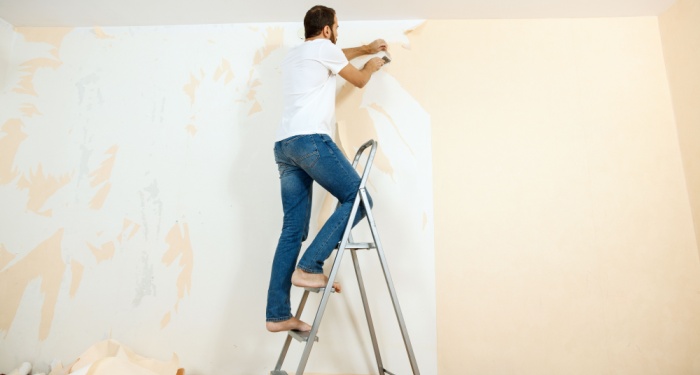
You should turn off the electricity before removing wallpaper for your own safety. You should consider wearing a mask as removing wallpaper can be a dusty job.
Strong Glue
To remove wallpaper that has been held to the wall by strong glue, you should first clear the room, moving furniture out of the way as much as you can. Lay tar along the floor and use painter’s tape to cover and protect any switches, vents and electrical outlets. Next, mix washing up liquid, hot water and one tablespoon of baking soda. If this mix doesn’t work, add vinegar to your mixture.
One cup of vinegar per gallon of water as a ratio should suffice. Put on a pair of gloves. Pull a tear in the wallpaper by a small amount and then start to spray the mixture on to the wallpaper. Give it half an hour before peeling off the entire wallpaper slowly. Rub the mixture onto a section of wallpaper with a damp sponge. Work along small areas (about 4 inches x 4 inches) so that as the glue softens, it will start to loosen.
Let the mixture soak in the glue for a couple of minutes before fully removing the glue. You can scrape it away with a putty knife or simply use a rag. Repeat this across the entire room or area of interest. A clean rag that is damp can be used to remove the mixture from the walls. Then dry the walls with another cloth. Open every window and door in the room. Wait a full day before you paint the walls if you were planning to.
Type of Wallpaper
Dry-strippable wallpaper can usually be removed with ease. Simply peeling it off from a corner should result in the wallpaper coming off. For porous wallpaper, a wet sponge should be used to loosen the wallpaper before carefully removing it.
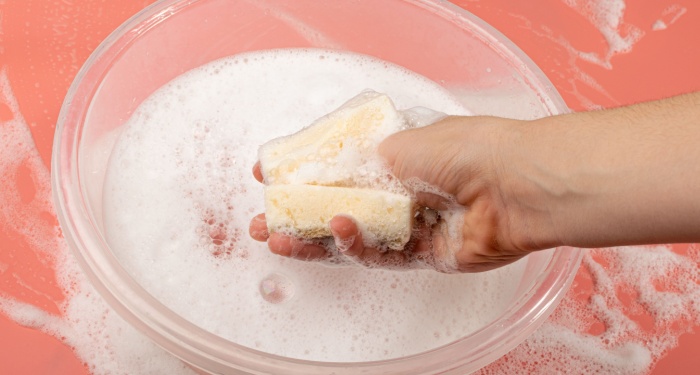
If the wallpaper is nonporous, you’ll have to first score it prior to adding water such as with a sponge. Then remove the nonporous wallpaper slowly.
Wallpaper on Plaster
Prepare the room by laying down tarp. You’ll need a bucket close by to put any strips of wallpaper in. Create a mixture to remove the wallpaper in the bucket.
The mixture should have a ratio of 5 oz of wallpaper stripper to a gallon of water. Unless you have dry-stripping wallpaper, you should apply the mixture onto the walls, soaking them and wait approximately eight minutes.
The walls that you wish to remove wallpaper from should be soaked at the same time. A wallpaper scraper can then be employed to start the wallpaper removal process. You could also use a putty knife for this job. Pull back the scraper at sharp angles to avoid removing plaster. After you’ve removed the wallpaper, you should clean each wall with hot water.
Wallpaper on Drywall
Once more, lay down tarps on the floor and prepare the room. Start by tearing off any wallpaper pieces which are loose. A putty knife or scraper can be utilised to loosen each corner. Peel off any wallpaper at an angle of roughly 15°. Take off the rest of the wallpaper. This can be done by creating small holes by using a scoring tool.
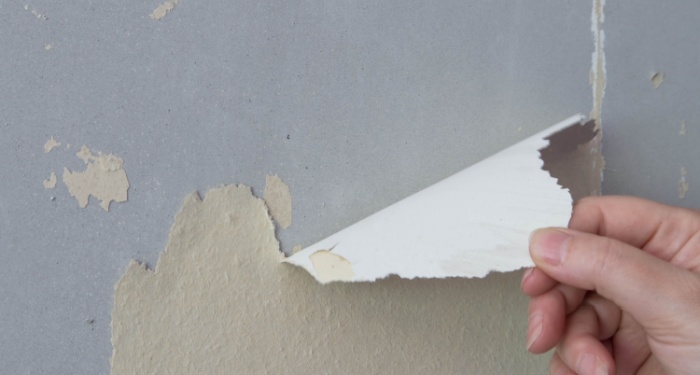
Avoid pressing against the wallpaper with too much strength as this could damage the drywall. If you are making little progress, you can use wallpaper removal sheets. They should first be soaked in a bucket with hot water. Lay the sheets along the wall, beginning from the corner of the wall.
While each edge of the paper should touch, they should not go over one another. Spray every sheet with a chemical stripper evenly. Let the sheets remain in place for roughly 30 minutes. Then, the wallpaper should come off easily.
Wallpaper That’s Been Painted Over
Once more, lay down tarp and ensure that the room is prepared for the job. First, you’ll need to know what type of paint you’re trying to remove. Apply nail polish remover with a towel. If the paint appears on the towel, then it’s latex. Otherwise, it is an oil-type paint. Run a scoring tool across each wall several times.
This will help to weaken the wallpaper. Alternatively, you could use a Brillo pad. Either steam or soak each wall. To steam, you may use a wallpaper steamer. Do this with four by four foot areas at a time. Once the wallpaper is evidently weakened, remove it with a plastic putty knife.
Continue to score the wall and apply a mixture of vinegar and water (both of even parts in the mixture). Any bits that are left over can be removed by hand. Wash each wall. Sanding and patching can help to tidy up any minor damage caused to the walls if this has occurred.
Layers of Wallpaper
For multi-layered wallpaper, you will need to remove each layer, one by one. Patiently treat each layer in a way that is appropriate to the type of wallpaper in question.
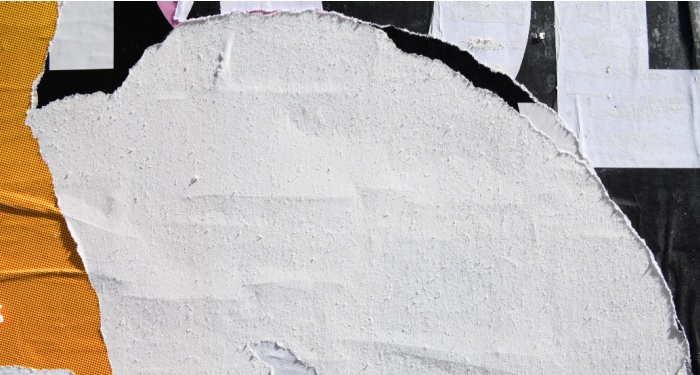
Use water or an appropriate liquid mixture if it is porous wallpaper or if it is nonporous wallpaper, score it and then use water or a mixture to remove it.
How Much Will it Cost to Strip Wallpaper?
In this section, we will discuss the labour costs involved in having wallpaper stripped. We will also look at the hourly and daily cost to hire a painter & decorator.
The labour costs of having wallpaper stripped for an average-sized room will likely end up about £150. A painter & decorator charges around £150 per day or approximately £16 per hour.
How Much is it to Wallpaper a Room?
To have wallpaper fitted in a room will cost about £200 in terms of the labour costs and approximately £300 if including supply costs.
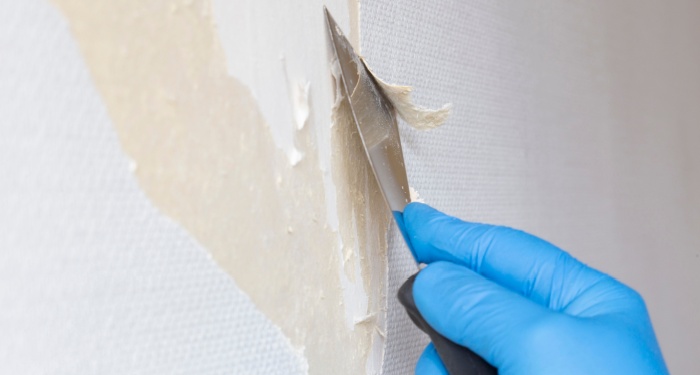
For further reading, check out our guide on the cost of wallpapering an entire room.
FAQs
Q: How do I calculate how much wallpaper I need?
A: To figure this out, divide the surface area of the wall(s) you wish to cover by the amount of wallpaper which can be used per roll.
Q: Where can I dispose of wallpaper paste and wallpaper?
A: After you remove wallpaper paste and the wallpaper itself, you can use a skip or another service such as a man and van service.
Q: How long is a roll of wallpaper?
A: Wallpaper rolls tend to be 13.5” x 20.5” or 16.5” x 27”.
Q: How to remove old wallpaper?
A: A garden sprayer can be used to spray a mixture of wallpaper removal solution and water on particularly old wallpaper. Allow the wallpaper to soak for roughly 15 to 20 minutes before starting the removal process with a putty knife or scraper.
Q: How long does it take newly fitted wallpaper to dry?
A: It may take anywhere from 1 to 2 days to dry. Some wallpaper can even take up to a fortnight for the adhesive to fully set.

